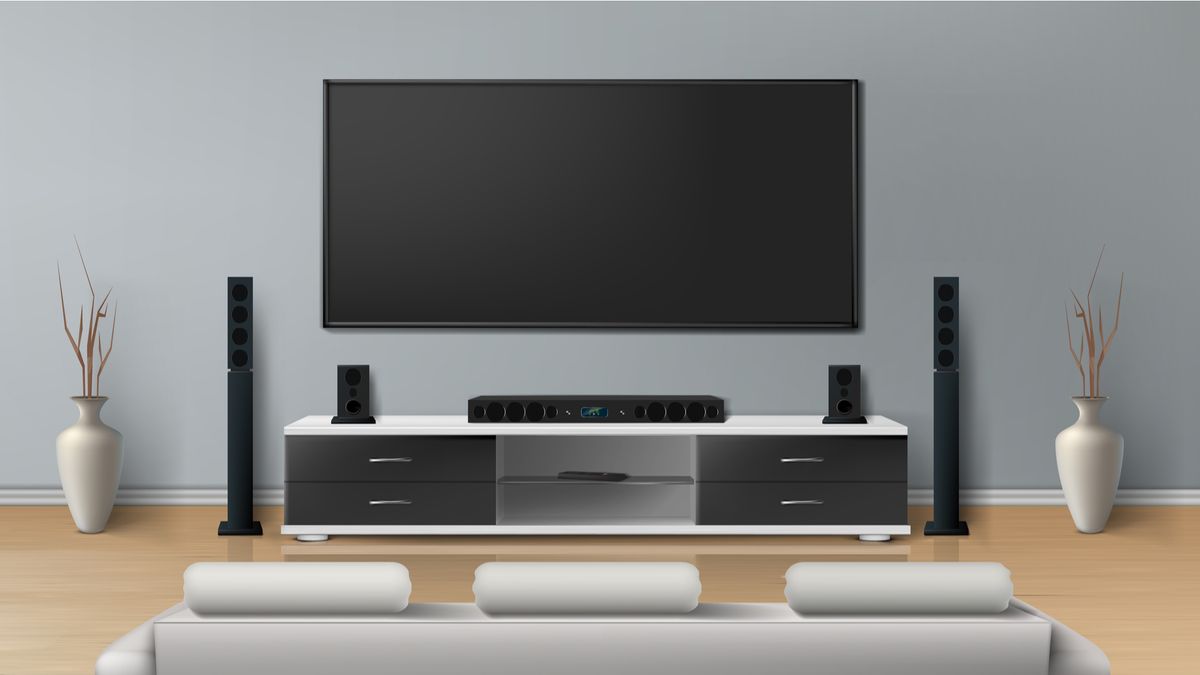
When it comes to your home audio system, surround sound will always be better than soundbars if sound quality and immersive experiences are your top objectives. The causes, however, are not as clear-cut as you may believe.
With little visual impact, soundbars are perfect for smaller rooms and are stylish and simple to install. To be honest, everything sounds better than television speakers. Soundbars are not as good at producing a full-range, head-turning audio experience as 5.1 surround sound systems or comparable home theater speaker arrays.
Why is surround sound a better option for home theater than a soundbar?
A well-configured surround sound speaker system is superior to a soundbar, however soundbars are superior to TV speakers in terms of enhancing dialogue volume, clarity, and even surround effects to some extent.
Determine the fidelity of the soundstage throughout the front stage.
Voices, background noise, and effects should appear to be coming from specific spots in front of you rather than directly at you when a screen occupies all or most of your field of vision. A do-it-all soundbar is not as good at pinpoint imaging or generating space in the front stage as properly positioned front right/left and center channel speakers.
Correctly capturing the human voice
It might be challenging to follow the plot of a show or film when the conversation is muffled. Part of what pulls us in deeper is the ability to capture the passion, tone, and texture of a human voice.
From Whitney Houston's peaks to Barry White's lows, the best center channel speakers produce conversation and voices with crystal-clear clarity. Every spoken word's complete impact and meaning are released. Having a dedicated speaker to anchor the front stage between the front left and right main speakers makes a big acoustic effect because up to 70% of audio information is always played through the center channel.
See Why the Center Channel is the Most Important Home Theater Speaker for additional information on the subject.
Precise frequency response, particularly when loud
With complex material, it becomes increasingly difficult to reproduce the source content truthfully, without any coloration or errors. Would you like to turn it up? To retain accuracy across the frequency spectrum, surround sound systems use more tweeters, mid-range drivers, and woofers in addition to a larger cabinet capacity.
You can sense the bass's depth and strength.
Slim soundbars are the norm. A top-tier powered subwoofer cannot be contained in a soundbar-sized enclosure, as everyone who has ever heard or felt one knows. Many soundbars are pre-paired with a "sub woofer" to make up for this. Even though we at SVS are huge fans of bass, the subwoofer that comes with a soundbar or 5.1 home theater system isn't a true subwoofer. Actually, one of the primary causes of SVS's existence is their subscribers.
Any subwoofer can play a few bass notes, but a true subwoofer needs to be proficient in five areas.
Bring the deep low frequency extension down to the human hearing threshold (about 20 Hz), where bass begins to be perceived.
Play at your desired output levels and don't struggle as the intensity and excitement increase.
Play the correct notes at the appropriate output levels while maintaining perfect tonal correctness.
The ability to stop and start quickly in transients allows for the rendering of all low frequency effects, both subtle and explosive, without muddying or distorting the soundstage.
The powered sub appears to be supplying bass for each speaker by blending in perfectly with the other speakers.
SVS subwoofers have these distinguishing features that "throw-in" subwoofers just cannot equal.
Authentic and diffuse rear surround image
One characteristic of genuinely realistic home audio experiences is the impression that sound is emanating from all directions. To highlight what is happening off-screen and where sound is coming from all around you, spatial imaging must be used to depict effects like the crack of a twig behind you, an aircraft soaring overhead, and voices in a crowded room.
Unsurprisingly, putting surround speakers behind you works better than tiny throw-in speakers or any kind of soundbar virtualization. Additionally, the potential for head-turning experiences is higher than ever thanks to immersive new audio formats like Dolby Atmos and DTS:X that add overhead "height effects" to the soundfield.
Adjustments to the sonic sweet spot
Despite their convenience, sound bars don't offer much installation flexibility. Usually, it is positioned beneath the TV on furniture or hung on the wall. This creates a single listening location with the finest dynamics and sound quality.
There are "sweet spots" with home theater systems as well, but they are easier to optimize depending on where and how many speakers are angled in relation to the listening locations. The sweet spot for soundbars will always be the same because they are almost always installed beneath the TV.
Impact and presentation in the theater style
There is merit to using a home entertainment system to create a visual statement, even though it falls somewhat outside the purview of sound quality and audio performance. A surround sound system for your home theater demonstrates how much you value entertainment. With the abundance of high-definition music, streaming HD video, Blu-ray films and concerts, and on-demand entertainment currently available, why not take advantage of all that technology has to offer by experiencing every sound and hearing every nuance?
The fun starts as soon as you make the decision to install a surround sound system for your home theater. Dolby Atmos speakers, 5.1 and 7.1-inch dual subwoofers, and a myriad of other options are available to elevate the audio experience to breathtaking heights.

 Admin
Admin
Leave A Reply
Your email address will not be published. Required fields are marked *